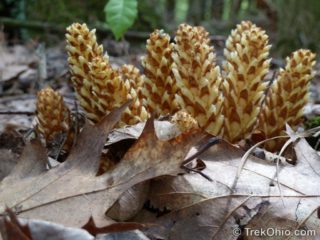
When other seeds germinate, the seedlings struggle to emerge into the sunlight, so they can photosynthesise and make their own nutrition. When a squawroot seed germinates, it squirms farther underground in search of its nourishment. It "feels around" in the dark until it finds the root of an oak or beech tree and latches on for dear life. For the rest of its life it will feed parasitically off these tree roots. The oak roots develop little, knobby protuberances where the squawroot has latched on,
Read more ➜
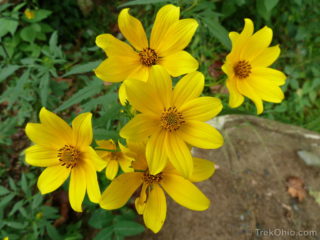 Below are a couple of dozen wildflowers that I photographed last month. I have numbered all the photos, so you can refer to the flower's number if you want to talk about a specific one. I haven't been able to identify all of them, so if you see one that you recognize please leave me a comment. Oh, and if you think I've misidentified any, I'd love to hear from you.
Read more ➜
Below are a couple of dozen wildflowers that I photographed last month. I have numbered all the photos, so you can refer to the flower's number if you want to talk about a specific one. I haven't been able to identify all of them, so if you see one that you recognize please leave me a comment. Oh, and if you think I've misidentified any, I'd love to hear from you.
Read more ➜  Below are a couple of dozen wildflowers that I photographed last month. I have numbered all the photos, so you can refer to the flower's number if you want to talk about a specific one. I haven't been able to identify all of them, so if you see one that you recognize please leave me a comment. Oh, and if you think I've misidentified any, I'd love to hear from you.
Read more ➜
Below are a couple of dozen wildflowers that I photographed last month. I have numbered all the photos, so you can refer to the flower's number if you want to talk about a specific one. I haven't been able to identify all of them, so if you see one that you recognize please leave me a comment. Oh, and if you think I've misidentified any, I'd love to hear from you.
Read more ➜ 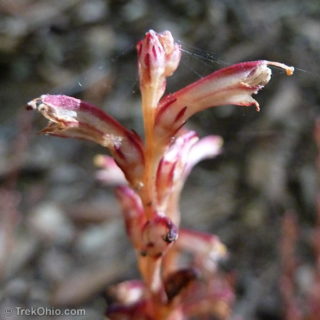 Most plants are green because of their chlorophyll which both tints their leaves and allows them to manufacture their own nutrition. However there are plants without chlorophyll; these plants aren't green, nor do they have leaves. So they turn to other living things to meet their nutritional needs. There are two categories of plants without chlorophyll depending on whether the plant directly gets its nutrition from another plant, or indirectly via a fungus which in turn gets its food from a plant.
Most plants are green because of their chlorophyll which both tints their leaves and allows them to manufacture their own nutrition. However there are plants without chlorophyll; these plants aren't green, nor do they have leaves. So they turn to other living things to meet their nutritional needs. There are two categories of plants without chlorophyll depending on whether the plant directly gets its nutrition from another plant, or indirectly via a fungus which in turn gets its food from a plant. 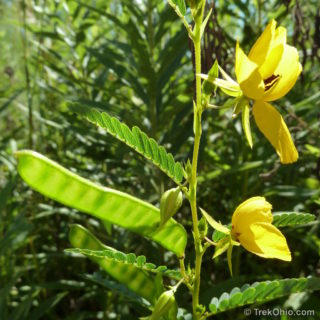 While I was at Gahanna Woods, I spotted these partridge peas growing in the meadow. They are native to the eastern United States, growing up to 3 feet (1 meter) tall. Their leaves are compound with each leaf having five to eighteen pairs of leaflets. Although I have heard of flowers that fold up their blossoms at night, the partridge pea is somewhat different in that it folds up its leaves at night. Each of the plant's yellow flowers has five petals with the bottom petal being longer than
While I was at Gahanna Woods, I spotted these partridge peas growing in the meadow. They are native to the eastern United States, growing up to 3 feet (1 meter) tall. Their leaves are compound with each leaf having five to eighteen pairs of leaflets. Although I have heard of flowers that fold up their blossoms at night, the partridge pea is somewhat different in that it folds up its leaves at night. Each of the plant's yellow flowers has five petals with the bottom petal being longer than 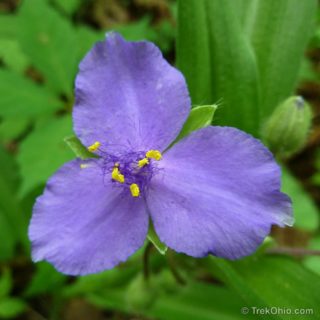 Since we were at Scioto Trail State Park mid-May, there were so many wildflowers along the trails that I thought they merited their own post. Here's a look at some of the flowers that we saw, plus some of the living creatures that were near them.
Wildflowers
Animal life
While looking for wildflowers, the following little creatures also caught my eye.
Additional information
Bob's post, Scioto Trail State
Since we were at Scioto Trail State Park mid-May, there were so many wildflowers along the trails that I thought they merited their own post. Here's a look at some of the flowers that we saw, plus some of the living creatures that were near them.
Wildflowers
Animal life
While looking for wildflowers, the following little creatures also caught my eye.
Additional information
Bob's post, Scioto Trail State  The white flower above is known by several names: Indian pipe, Ghost plant and Corpse plant. Like squawroot, Indian pipe can't meet its own nutritional needs since it has no chlorophyll. It leads a parasitic life just as squawroot does.
While squawroot gets its nutrition by directly tapping into the roots of oak trees, Indian pipe gets its nutrition more indirectly. It's host organism is a fungus, a member of the Russulaceae family. This fungus gets its nutrition from tree roots. However
The white flower above is known by several names: Indian pipe, Ghost plant and Corpse plant. Like squawroot, Indian pipe can't meet its own nutritional needs since it has no chlorophyll. It leads a parasitic life just as squawroot does.
While squawroot gets its nutrition by directly tapping into the roots of oak trees, Indian pipe gets its nutrition more indirectly. It's host organism is a fungus, a member of the Russulaceae family. This fungus gets its nutrition from tree roots. However  When other seeds germinate, the seedlings struggle to emerge into the sunlight, so they can photosynthesise and make their own nutrition. When a squawroot seed germinates, it squirms farther underground in search of its nourishment. It "feels around" in the dark until it finds the root of an oak or beech tree and latches on for dear life. For the rest of its life it will feed parasitically off these tree roots. The oak roots develop little, knobby protuberances where the squawroot has latched on,
When other seeds germinate, the seedlings struggle to emerge into the sunlight, so they can photosynthesise and make their own nutrition. When a squawroot seed germinates, it squirms farther underground in search of its nourishment. It "feels around" in the dark until it finds the root of an oak or beech tree and latches on for dear life. For the rest of its life it will feed parasitically off these tree roots. The oak roots develop little, knobby protuberances where the squawroot has latched on, 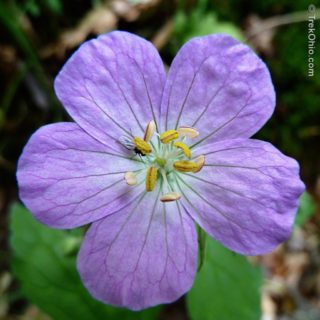 This post features assorted, spring flowers that I photographed this past April in Ohio that did not have spiders on them. Click on a flower if you'd like to see a larger version of it. Hovering over each photo with your mouse will display the species name if I've managed to identify it (Update: I've since gone back and added an identifying caption after each pair of flowers). If you can identify any of the mystery flowers, I'd love to hear from you in the comments.
This post features assorted, spring flowers that I photographed this past April in Ohio that did not have spiders on them. Click on a flower if you'd like to see a larger version of it. Hovering over each photo with your mouse will display the species name if I've managed to identify it (Update: I've since gone back and added an identifying caption after each pair of flowers). If you can identify any of the mystery flowers, I'd love to hear from you in the comments.
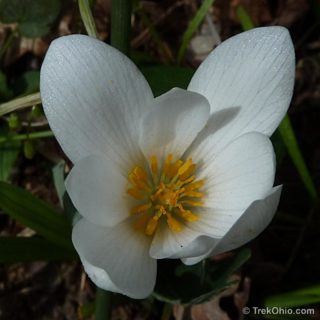 My family went for a hike in Ohio's Mohican State Park this weekend, and I noticed a number of flowers that were just beginning to unfurl.
To see more-developed examples of the above flowers, check out my post, Common Spring Wildflowers in Ohio.
Besides the flowers, fiddlehead ferns also were beginning to unfurl.
New life is emerging all over the forests.
My family went for a hike in Ohio's Mohican State Park this weekend, and I noticed a number of flowers that were just beginning to unfurl.
To see more-developed examples of the above flowers, check out my post, Common Spring Wildflowers in Ohio.
Besides the flowers, fiddlehead ferns also were beginning to unfurl.
New life is emerging all over the forests.